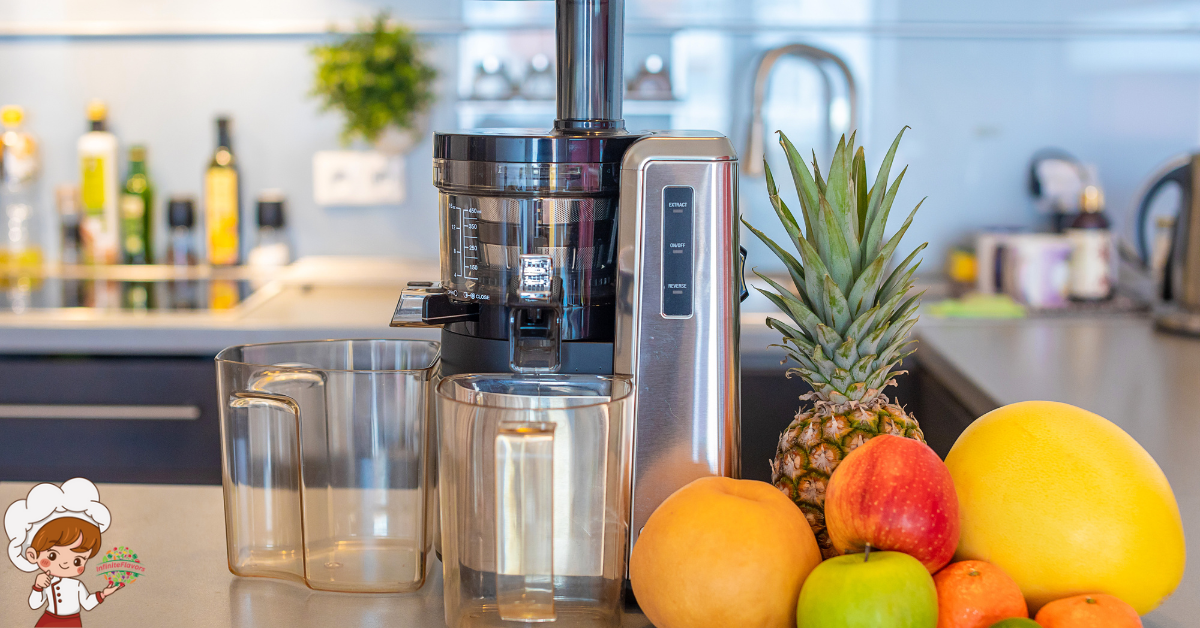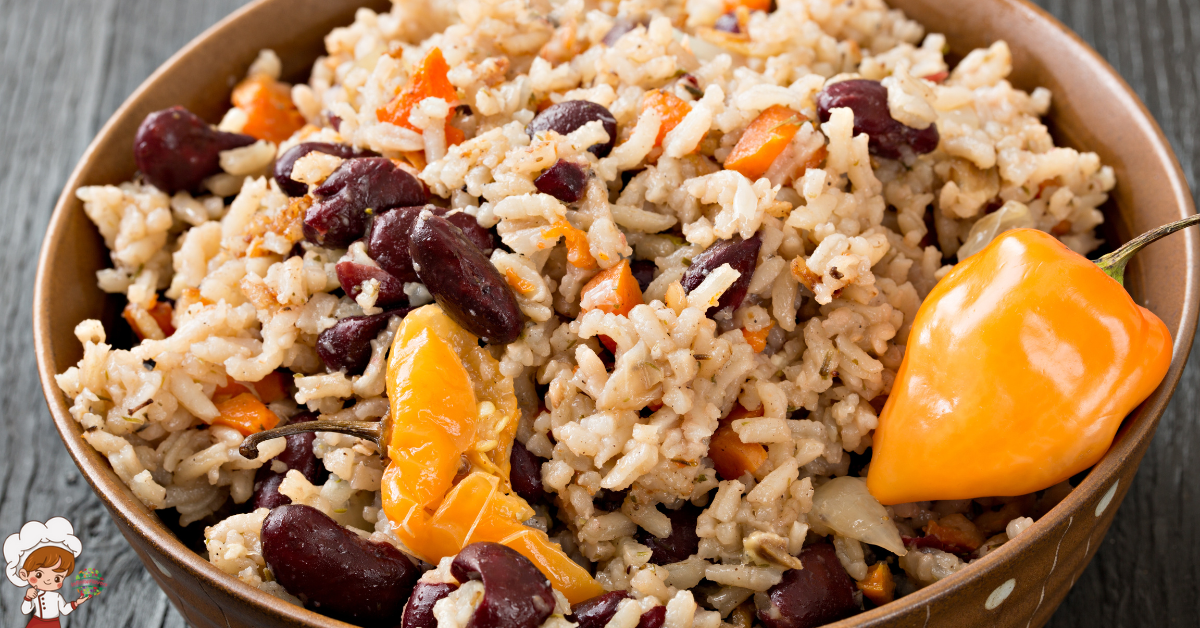How To: Gluten-Free Diet for Diabetes

Gluten-Free Diet for Diabetes; Are you tired of feeling like a fish out of water when it comes to managing your diabetes? If so, it’s time to dive into the world of gluten-free diets for diabetes. This dietary approach has been gaining traction in recent years, and for good reason.
Not only does it have the potential to help control your blood sugar levels, but it may also reduce inflammation and improve gut health. But how exactly does it work? And what challenges might you face along the way? In this discussion, we’ll explore the intricacies of a gluten-free lifestyle for diabetics and provide you with tips and recipes to help you navigate this journey successfully. So, let’s take the plunge together and discover the possibilities of a gluten-free diet for diabetes.
Understanding the Link: Diabetes and Gluten
If you have diabetes and are curious about the relationship between gluten and your condition, this article will provide you with a clear and evidence-based understanding of the link. Understanding how gluten affects diabetes is crucial for managing your health effectively.
Firstly, let’s explore the benefits of a gluten-free diet for individuals with diabetes. Going gluten-free can lead to improved blood sugar control, as gluten-containing foods often have a high glycemic index, causing spikes in blood sugar levels. By eliminating gluten, you can stabilize your blood sugar and prevent these fluctuations. Additionally, a gluten-free diet can help you maintain a healthy weight, which is essential for managing diabetes. Many gluten-free foods are naturally low in carbohydrates and high in fiber, providing you with sustained energy and keeping you full for longer periods.
However, it’s important to acknowledge the challenges of adopting a gluten-free diet for individuals with diabetes. Gluten-free products are often more expensive and may be harder to access, especially in certain areas. It can also be challenging to navigate social situations and dining out while adhering to a gluten-free diet. Careful planning and communication with friends, family, and restaurants can help overcome these challenges. Moreover, it is crucial to ensure that you are still getting all the necessary nutrients while following a gluten-free diet. Consultation with a registered dietitian can help you develop a well-balanced meal plan that meets all your nutritional needs.
Benefits of a Gluten-Free Diet for Diabetes
A gluten-free diet can offer several benefits for individuals with diabetes. Firstly, it can help improve blood sugar control by eliminating foods that may cause spikes in blood glucose levels. Secondly, a gluten-free diet can reduce inflammation levels in the body, which is important for managing diabetes and preventing complications. Lastly, by eliminating gluten-containing foods, individuals with diabetes may experience increased nutrient absorption, leading to better overall health and well-being.
Improved Blood Sugar Control
Improving blood sugar control is a significant benefit of adopting a gluten-free diet for individuals with diabetes. Research has shown that a gluten-free diet can help improve insulin sensitivity, which is crucial for regulating blood sugar levels. When you consume gluten, it can lead to inflammation in the body, affecting insulin production and utilization. By eliminating gluten from your diet, you can reduce inflammation and improve your body’s ability to respond to insulin.
Additionally, a gluten-free diet can aid in weight management, which is essential for individuals with diabetes. Many gluten-free foods are naturally low in carbohydrates and high in fiber, promoting satiety and preventing spikes in blood sugar levels. By following a gluten-free diet, you can achieve better blood sugar control and overall diabetes management.
Reduced Inflammation Levels
Reduced inflammation levels are a key benefit of adopting a gluten-free diet for individuals with diabetes. When you eliminate gluten from your diet, it can help reduce joint pain and manage autoimmune conditions associated with diabetes. Here are two ways a gluten-free diet can help reduce inflammation:
- Anti-inflammatory properties of gluten-free foods: Many gluten-free foods are naturally rich in antioxidants and anti-inflammatory compounds, such as fruits, vegetables, nuts, and seeds. These foods can help lower inflammation levels in your body and provide relief from joint pain.
- Reduced immune response: For individuals with celiac disease, consuming gluten can trigger an immune response that leads to inflammation. By following a gluten-free diet, you can manage this immune response, reducing inflammation levels and the associated symptoms.
Increased Nutrient Absorption
By adopting a gluten-free diet, individuals with diabetes can enhance their ability to absorb essential nutrients for optimal health. Gluten, a protein found in wheat, barley, and rye, can cause damage to the lining of the small intestine in some individuals, leading to impaired nutrient absorption. This can be particularly problematic for people with diabetes, who already have an increased risk of nutrient deficiencies. When gluten is eliminated from the diet, the lining of the small intestine can heal, allowing for improved absorption of vital nutrients such as vitamins, minerals, and antioxidants.
Additionally, a gluten-free diet can promote overall gut health by reducing inflammation and restoring the balance of gut bacteria. This can further optimize nutrient absorption and support overall well-being for individuals with diabetes.
Controlling Blood Sugar Levels With a Gluten-Free Diet
Following a gluten-free diet can help you effectively manage your blood sugar levels in diabetes. By understanding gluten intolerance and implementing gluten-free meal planning, you can make informed choices that support your overall health and well-being.
Here are two key ways a gluten-free diet can help you control your blood sugar levels:
- Improved Insulin Sensitivity: Research suggests that individuals with gluten intolerance may have impaired insulin sensitivity, leading to difficulties in regulating blood sugar levels. By eliminating gluten from your diet, you can potentially enhance insulin sensitivity and improve glucose control. This can help prevent blood sugar spikes and reduce the risk of complications associated with diabetes.
- Balanced Carbohydrate Intake: Gluten-containing foods, such as wheat-based products, often contribute to a high carbohydrate intake. Consuming excessive carbohydrates can cause blood sugar levels to rise rapidly, making it challenging to manage diabetes. By opting for gluten-free alternatives and focusing on whole, unprocessed foods, you can better control your carbohydrate intake. This can lead to more stable blood sugar levels and improved glycemic control.
In addition to these benefits, a gluten-free diet can also support overall digestive health and reduce inflammation in individuals with gluten intolerance. However, it is important to note that not everyone with diabetes needs to follow a gluten-free diet. If you suspect gluten intolerance or have been diagnosed with celiac disease, it is crucial to consult with a healthcare professional or registered dietitian to determine if a gluten-free diet is appropriate for you.
Reducing Inflammation Through a Gluten-Free Lifestyle
To further explore the benefits of a gluten-free diet, let’s now explore how it can help you reduce inflammation and improve your overall health. Chronic inflammation is believed to play a role in the development and progression of many diseases, including diabetes. By adopting a gluten-free lifestyle, you can potentially reduce inflammation and its negative effects on your body.
One way a gluten-free diet can help reduce inflammation is by improving the health of your gut microbiome. The gut microbiome refers to the trillions of bacteria that reside in your digestive tract. Research has shown that certain types of gut bacteria can promote inflammation, while others have anti-inflammatory properties. Studies have found that a gluten-free diet can positively influence the composition of the gut microbiome, leading to a decrease in inflammation. By avoiding gluten-containing foods, you are essentially removing a potential trigger for inflammation in your gut.
In addition to improving gut health, a gluten-free diet may also reduce inflammation by decreasing the production of pro-inflammatory cytokines. Cytokines are small proteins that play a crucial role in the immune response. Some studies have shown that gluten can stimulate the release of pro-inflammatory cytokines in individuals with celiac disease or non-celiac gluten sensitivity. By eliminating gluten from your diet, you may be able to reduce the production of these cytokines and subsequently decrease inflammation.
Reducing inflammation through a gluten-free lifestyle can have a positive impact on your overall health. Chronic inflammation has been linked to various health conditions, including cardiovascular disease, cancer, and autoimmune disorders. By adopting a gluten-free diet, you are taking proactive steps to reduce inflammation and potentially improve your long-term health outcomes. However, it’s important to note that if you suspect you have celiac disease or non-celiac gluten sensitivity, it is essential to consult with a healthcare professional before making any dietary changes.
Improving Gut Health With a Gluten-Free Diet
Improving gut health is crucial for overall well-being, especially for individuals with diabetes. The gut microbiome plays a significant role in digestion, nutrient absorption, and immune function. By adopting a gluten-free diet, you can reduce inflammation in the gut, which can lead to better gut health and improved management of diabetes. Additionally, exploring alternatives to gluten-containing grains can provide a variety of options that are both nutritious and beneficial for gut health.
Gut Microbiome and Gluten
Enhance your gut health by adopting a gluten-free diet, which positively influences the gut microbiome. The gut microbiome refers to the trillions of microorganisms that reside in your digestive tract. These microorganisms play a crucial role in maintaining your overall health, including your immune system and brain function. When it comes to the gut-brain connection, research suggests that imbalances in the gut microbiome can contribute to conditions such as anxiety and depression. By following a gluten-free diet, you can help restore balance to your gut microbiome and potentially improve your mental well-being. Additionally, gluten-free baking offers an array of alternative flours and ingredients that can be used to create delicious and nutritious treats without compromising your gut health.
Inflammation and Gut Health
A gluten-free diet can have a positive impact on gut health by reducing inflammation in the digestive tract. Inflammation in the gut can occur as a result of consuming gluten, especially in individuals with celiac disease or non-celiac gluten sensitivity. When gluten is ingested, it can trigger an immune response in the gut, leading to inflammation and damage to the intestinal lining. This can cause symptoms such as abdominal pain, bloating, and diarrhea.
By eliminating gluten from the diet, inflammation in the gut can be reduced, allowing the intestinal lining to heal and promoting better gut health. Additionally, a gluten-free diet may also contribute to weight loss, which can further improve gut health by reducing inflammation and promoting a healthier digestive system.
Gluten-Free Grains Alternatives
Switching to gluten-free grains can have a positive impact on improving gut health on a gluten-free diet. When it comes to gluten-free baking, there are a variety of alternatives to traditional wheat flour that can be used. Some of these options include almond flour, coconut flour, and tapioca flour. These alternatives not only provide a gluten-free option but also add nutritional value to your baked goods. Almond flour, for example, is high in healthy fats and protein, while coconut flour is high in fiber.
Additionally, when it comes to pasta, there are several gluten-free alternatives available. Brown rice pasta, quinoa pasta, and chickpea pasta are just a few examples. These alternatives can help you enjoy your favorite pasta dishes while still sticking to a gluten-free diet.
Gluten-Free Foods to Include in Your Diabetes Meal Plan
Including gluten-free foods in your diabetes meal plan can help you manage your blood sugar levels more effectively. When it comes to gluten-free meal planning, it’s important to choose foods that are not only safe for your diabetes but also delicious. Here are some gluten-free foods that you can include in your diabetes meal plan.
Firstly, let’s talk about gluten-free grains. Quinoa is a great option as it is high in protein and low in carbohydrates, making it a good choice for managing blood sugar levels. Brown rice is another gluten-free grain that is packed with fiber and nutrients. These grains can be used as a base for your meals or as a side dish.
In addition to grains, there are many gluten-free protein options. Lean meats such as chicken and turkey are naturally gluten-free and can be incorporated into your meals. Fish, such as salmon and tuna, are also gluten-free and are a great source of omega-3 fatty acids, which have been shown to improve insulin sensitivity.
When it comes to snacks and desserts, you don’t have to miss out on delicious treats. There are plenty of gluten-free dessert options available. For example, you can enjoy fresh fruits, yogurt, or homemade gluten-free cookies made with almond flour or coconut flour. These desserts can satisfy your sweet tooth without causing a spike in your blood sugar levels.
Gluten-Free Snack Ideas for Diabetics
To continue managing your blood sugar levels effectively, let’s explore some gluten-free snack ideas that are suitable for diabetics. Following a gluten-free diet can be challenging, especially when it comes to finding healthy and delicious snacks. However, there are plenty of options available that not only meet your dietary needs but also provide you with essential nutrients.
When it comes to gluten-free baking, you can create a variety of snacks using alternative flours such as almond flour, coconut flour, or quinoa flour. These flours are low in carbohydrates and high in fiber, making them suitable for diabetics. Some gluten-free baking snack ideas include:
- Almond flour muffins with blueberries: These muffins are not only gluten-free but also packed with antioxidants and fiber from the blueberries. They make a delicious and satisfying snack option.
- Coconut flour pancakes: Made with coconut flour and eggs, these pancakes are high in protein and low in carbs. Top them with sugar-free syrup or fresh fruit for a guilt-free treat.
In addition to gluten-free baking, there are plenty of naturally gluten-free snacks that you can enjoy:
- Greek yogurt with berries: Greek yogurt is high in protein and low in carbohydrates. Adding fresh berries not only adds natural sweetness but also provides you with antioxidants and fiber.
- Vegetable sticks with hummus: Cut up some carrots, celery, and bell peppers and enjoy them with a side of gluten-free hummus. This snack is not only nutritious but also satisfying and low in carbs.
Tips for Dining Out on a Gluten-Free Diabetic Diet
When dining out on a gluten-free diabetic diet, it is important to be proactive and informed about your food choices. Finding gluten-free dining options and restaurants that cater to your dietary needs may seem challenging, but with a little research and preparation, you can enjoy a delicious and safe meal. Here are some tips to help you navigate dining out on a gluten-free diabetic diet.
Firstly, do your homework. Before heading out to a restaurant, check their menu online or give them a call to inquire about their gluten-free options. Many restaurants now offer gluten-free menus or have specific dishes that can be modified to accommodate your needs. It’s also a good idea to read reviews or ask for recommendations from others who follow a gluten-free diet.
When you arrive at the restaurant, communicate your dietary restrictions to the server or the chef. They can guide you through the menu and help you make the best choices. Be specific about your requirements, such as avoiding cross-contamination or gluten-containing ingredients.
Choose dishes that are naturally gluten-free, such as grilled meats, fish, vegetables, and salads. Avoid fried foods or dishes that may have hidden sources of gluten, like sauces, gravies, or marinades. Opt for simple preparations with minimal ingredients to minimize the risk of gluten contamination.
If you’re unsure about a particular dish, don’t hesitate to ask questions about its preparation. It’s better to be safe than sorry. Also, remember to inform your server about your diabetic condition, so they can assist you in making healthier choices by suggesting low-carb or sugar-free options.
Lastly, it’s always a good idea to carry gluten-free snacks or meal replacements with you, just in case you can’t find suitable options at a restaurant. This will ensure that you have something safe to eat if all else fails.
Overcoming Challenges of a Gluten-Free Lifestyle With Diabetes
Overcoming the challenges of maintaining a gluten-free lifestyle with diabetes requires careful planning and education. It can be daunting to navigate social situations and maintain a balanced diet while managing both conditions. However, with the right strategies and support, it is possible to overcome these challenges and lead a healthy, fulfilling life.
Here are some tips to help you overcome social challenges and maintain a balanced diet:
- Educate yourself: Learn about the gluten-free diet and its impact on diabetes management. Understand which foods contain gluten and how to identify them on food labels. This knowledge will empower you to make informed decisions and confidently communicate your dietary needs to others.
- Plan ahead: Before attending social events or dining out, research gluten-free options available in the area. Call the restaurant in advance to discuss your dietary restrictions and ensure they can accommodate your needs. By planning ahead, you can avoid feeling overwhelmed or pressured into making unhealthy food choices.
- Communicate effectively: Inform your friends, family, and colleagues about your dietary requirements. Explain the importance of maintaining a gluten-free diet for managing your diabetes and ask for their support. Open communication will help alleviate any potential misunderstandings and enable others to accommodate your needs.
- Seek support: Connect with support groups or online communities that focus on gluten-free living and diabetes management. These communities can provide valuable advice, recipe ideas, and emotional support from individuals who have faced similar challenges. Sharing experiences and tips with others can make the journey easier and more enjoyable.
- Experiment with recipes: Embrace the opportunity to explore new gluten-free recipes and experiment with different ingredients. This can help you discover delicious alternatives and expand your culinary repertoire. By finding joy in cooking and trying new foods, you can maintain a balanced diet and overcome any feelings of deprivation.
Gluten-Free Recipes for Diabetics
Maintaining a gluten-free lifestyle while managing diabetes can be challenging, but with the right strategies and support, you can enjoy a variety of delicious gluten-free recipes that are suitable for diabetics. When it comes to baking, there are plenty of gluten-free alternatives that can replace traditional wheat flour. Coconut flour, almond flour, and oat flour are all great options that can be used in a 1:1 ratio to wheat flour. These gluten-free baking alternatives not only provide a similar texture and taste but also have a lower glycemic index, which means they have a slower impact on blood sugar levels.
For those who love pasta but need to avoid gluten, there are several gluten-free pasta options available. Brown rice pasta, quinoa pasta, and chickpea pasta are all great alternatives that provide a similar taste and texture to traditional wheat pasta. These gluten-free pasta options are also high in fiber and protein, which can help regulate blood sugar levels and promote satiety.
When it comes to gluten-free recipes for diabetics, it’s important to focus on whole, unprocessed foods. Incorporating plenty of vegetables, lean proteins, and healthy fats into your meals can help stabilize blood sugar levels and promote overall health. For example, you can enjoy a delicious gluten-free stir-fry with chicken or tofu, loaded with colorful vegetables like bell peppers, broccoli, and carrots. Another option is to make a gluten-free quinoa salad with mixed greens, cherry tomatoes, cucumbers, and a drizzle of olive oil and lemon juice.
Incorporating Exercise Into a Gluten-Free Diabetic Diet
To effectively manage your gluten-free diabetic diet, incorporating regular exercise is essential for maintaining blood sugar control and overall health. Exercise offers numerous benefits for individuals with diabetes, including improved insulin sensitivity, weight management, and better cardiovascular health. By following exercise routines specifically designed for diabetics, you can optimize your blood sugar levels and enhance your overall well-being.
Here are two sub-lists that outline the exercise benefits and exercise routines you can incorporate into your gluten-free diabetic diet:
Exercise Benefits:
- Improved Insulin Sensitivity: Regular exercise helps your body use insulin more effectively, allowing for better blood sugar control. It can reduce insulin resistance and lower your risk of developing type 2 diabetes complications.
- Weight Management: Engaging in physical activity helps you maintain a healthy weight or lose excess weight, both of which are crucial for managing diabetes. By burning calories through exercise, you can improve insulin sensitivity and reduce the need for medication.
Exercise Routines:
- Aerobic Exercise: Engaging in activities such as brisk walking, cycling, swimming, or dancing can help improve cardiovascular health, increase endurance, and lower blood sugar levels. Aim for at least 150 minutes of moderate-intensity aerobic exercise per week.
- Strength Training: Incorporating resistance exercises like weightlifting or using resistance bands can help build muscle mass, improve insulin sensitivity, and enhance overall physical function. Aim for two to three sessions per week, targeting major muscle groups.
Remember to always consult with your healthcare team before starting any exercise routine, as they can provide personalized recommendations based on your specific needs and goals. By incorporating regular exercise into your gluten-free diabetic diet, you can take control of your blood sugar levels and improve your overall health.
Gluten-Free Diet for Diabetes; Frequently Asked Questions
Can a Gluten-Free Diet Help Improve Insulin Sensitivity in People With Diabetes?
A gluten-free diet can help improve insulin sensitivity in people with diabetes. It has been shown to have benefits in reducing inflammation and stabilizing blood sugar levels, leading to better control of diabetes.
Is It Necessary to Completely Eliminate Gluten From the Diet or Can Small Amounts Be Tolerated?
You can tolerate small amounts of gluten in your diet, but completely eliminating it may be necessary for better glucose control. Gluten tolerance can vary among individuals with diabetes, so it’s important to monitor your body’s response.
Are There Any Potential Risks or Side Effects Associated With Following a Gluten-Free Diet for Diabetes?
There may be potential risks and side effects associated with following a gluten-free diet for diabetes. It’s important to consult with a healthcare professional to ensure you’re getting all the necessary nutrients and avoiding any negative health consequences.
Can a Gluten-Free Diet Have an Impact on Weight Management for Individuals With Diabetes?
A gluten-free diet can impact weight management for individuals with diabetes. It may improve insulin sensitivity and help regulate blood sugar levels. However, it’s important to consult with a healthcare professional for personalized advice on managing diabetes.
Are There Any Specific Gluten-Free Meal Planning Strategies or Guidelines for People With Diabetes?
Are you looking for gluten-free meal planning strategies or guidelines for managing your diabetes? You can find a variety of gluten-free meal ideas and snack options that can support your dietary needs.
Conclusion
In conclusion, a gluten-free diet can be beneficial for individuals with diabetes. It helps in controlling blood sugar levels, reducing inflammation, and improving gut health. Although dining out and overcoming challenges can be difficult, there are many gluten-free recipes available for diabetics. It is also important to incorporate exercise into a gluten-free diabetic diet for overall health and well-being. By following a gluten-free lifestyle, individuals with diabetes can take an important step towards managing their condition effectively.








